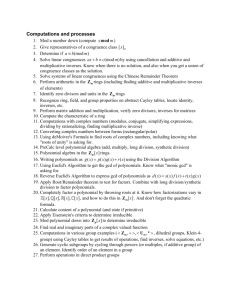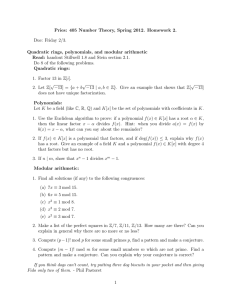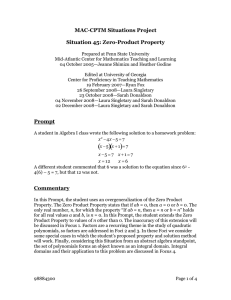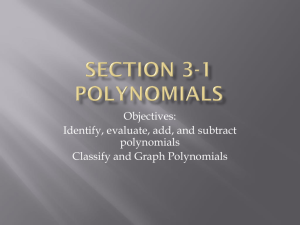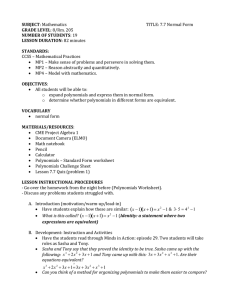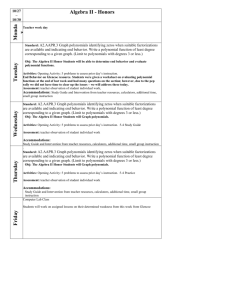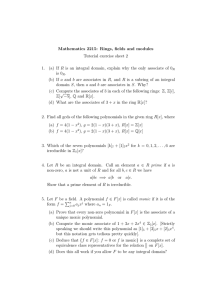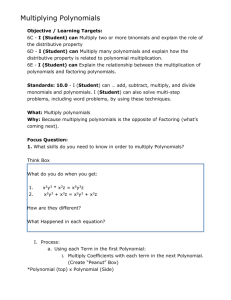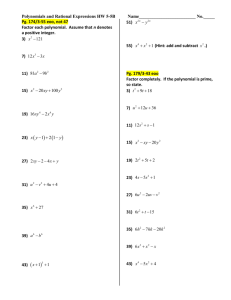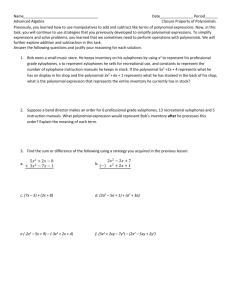Sample Exam #1
advertisement
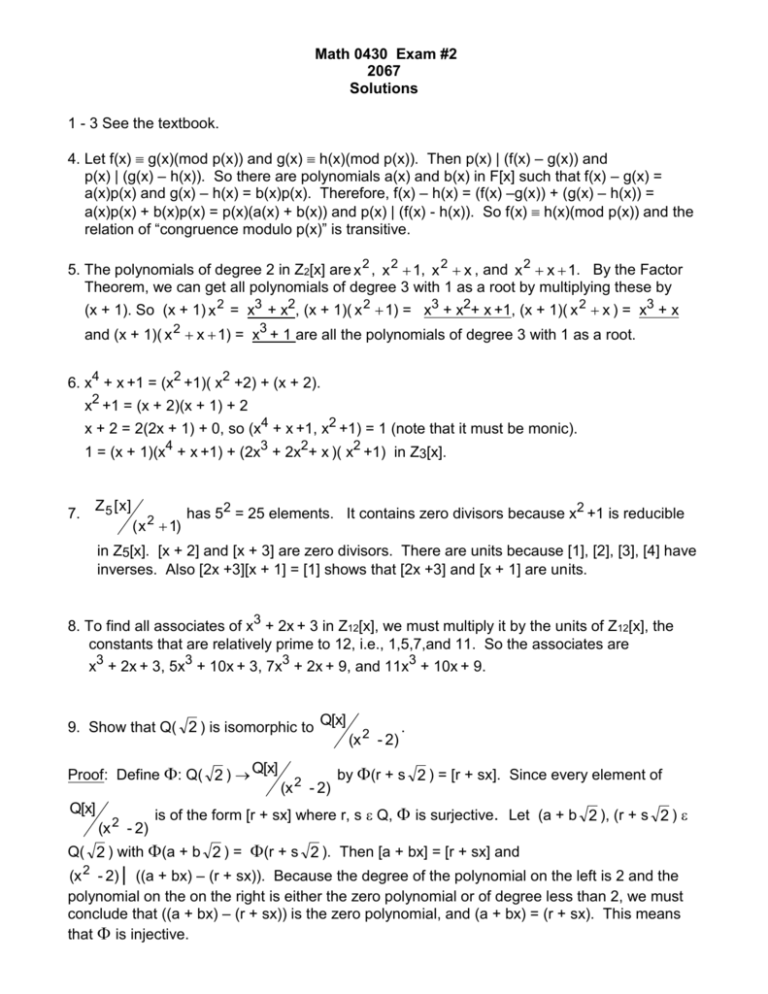
Math 0430 Exam #2 2067 Solutions 1 - 3 See the textbook. 4. Let f(x) g(x)(mod p(x)) and g(x) h(x)(mod p(x)). Then p(x) | (f(x) – g(x)) and p(x) | (g(x) – h(x)). So there are polynomials a(x) and b(x) in F[x] such that f(x) – g(x) = a(x)p(x) and g(x) – h(x) = b(x)p(x). Therefore, f(x) – h(x) = (f(x) –g(x)) + (g(x) – h(x)) = a(x)p(x) + b(x)p(x) = p(x)(a(x) + b(x)) and p(x) | (f(x) - h(x)). So f(x) h(x)(mod p(x)) and the relation of “congruence modulo p(x)” is transitive. 5. The polynomials of degree 2 in Z2[x] are x 2 , x 2 1, x 2 x , and x 2 x 1. By the Factor Theorem, we can get all polynomials of degree 3 with 1 as a root by multiplying these by (x + 1). So (x + 1) x 2 = x3 + x2, (x + 1)( x 2 1) = x3 + x2+ x +1, (x + 1)( x 2 x ) = x3 + x and (x + 1)( x 2 x 1) = x3 + 1 are all the polynomials of degree 3 with 1 as a root. 6. x4 + x +1 = (x2 +1)( x2 +2) + (x + 2). x2 +1 = (x + 2)(x + 1) + 2 x + 2 = 2(2x + 1) + 0, so (x4 + x +1, x2 +1) = 1 (note that it must be monic). 1 = (x + 1)(x4 + x +1) + (2x3 + 2x2+ x )( x2 +1) in Z3[x]. 7. Z 5 [ x] ( x 2 1) has 52 = 25 elements. It contains zero divisors because x2 +1 is reducible in Z5[x]. [x + 2] and [x + 3] are zero divisors. There are units because [1], [2], [3], [4] have inverses. Also [2x +3][x + 1] = [1] shows that [2x +3] and [x + 1] are units. 8. To find all associates of x3 + 2x + 3 in Z12[x], we must multiply it by the units of Z12[x], the constants that are relatively prime to 12, i.e., 1,5,7,and 11. So the associates are x3 + 2x + 3, 5x3 + 10x + 3, 7x3 + 2x + 9, and 11x3 + 10x + 9. 9. Show that Q( 2 ) is isomorphic to Q[x] Proof: Define : Q( 2 ) Q[x] Q[x] (x 2 - 2) (x 2 - 2) (x 2 - 2) . by (r + s 2 ) = [r + sx]. Since every element of is of the form [r + sx] where r, s Q, is surjective. Let (a + b 2 ), (r + s 2 ) Q( 2 ) with (a + b 2 ) = (r + s 2 ). Then [a + bx] = [r + sx] and (x 2 - 2) | ((a + bx) – (r + sx)). Because the degree of the polynomial on the left is 2 and the polynomial on the on the right is either the zero polynomial or of degree less than 2, we must conclude that ((a + bx) – (r + sx)) is the zero polynomial, and (a + bx) = (r + sx). This means that is injective. Let (a + b 2 ), (r + s 2 ) Q( 2 ). Then ((a + b 2 ) + (r + s 2 )) = ((a +r) + (b + s) 2 ) = [(a +r) + (b + s)x] = [a + bx] + [r + sx] = ((a + b 2 )) + (r + s 2 )). Also, ((a + b 2 )·(r + s 2 )) = ((ar + 2bs) +(as + br) 2 ) = [(ar + 2bs) +(as + br)x] = [ar +(bs) x 2 +(as + br)x] [(a + bx)(r + sx)] = [a + bx][r + sx] = ((a + b 2 )) · ((r + s 2 )). So is an isomorphism. 10. Z 3 [ x] 3 ( x 2x 1) is an integral domain that has 27 elements, since x3 + 2x + 1 is irreducible in Z3[x]. Extra Credit: By the Remainder Theorem, this is f(1) = 1 + 2 + 1 + 7 + 2 +1 = 14 = 2 in Z12.




